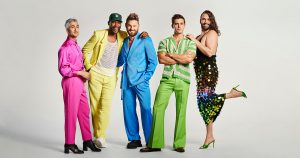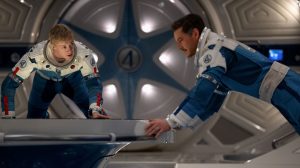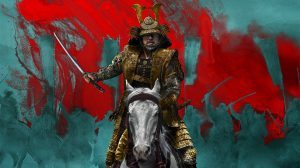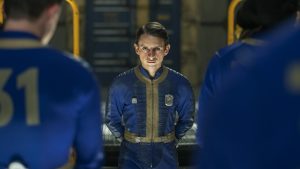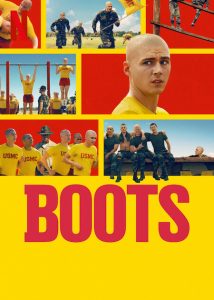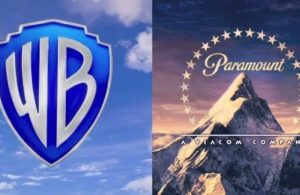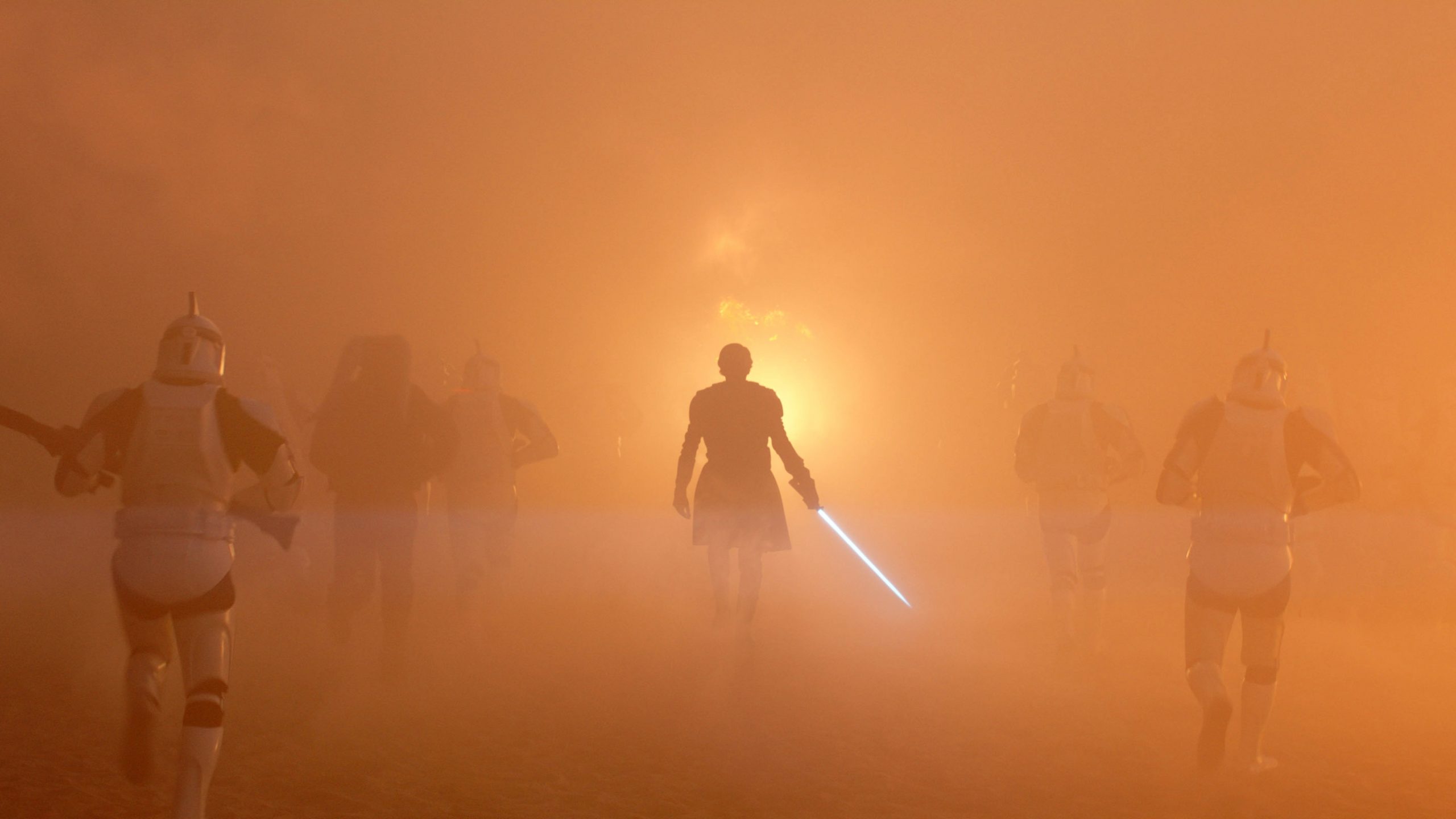
Way back in 2002, the excitement for Star Wars Episode II: Attack of the Clones diminished somewhat. Late Night with Conan O’Brien sent Triumph the Insult Comic Dog to mock the fans lined up for the premiere, resulting in a segment in which comedian/puppeteer Robert Smigel launched nerd jokes at the assembly.
Most of the jokes were pretty obvious, including the last bit, in which a man cosplaying as Mr. Spock gained the knack for cursing and walked up and down the line with his middle finger extended. But while the perceived Star Wars vs. Star Trek rivalry has become an old toxic cliché at this point, the fact is that the two franchises don’t actually overlap very much in terms of their core missions. Trek favors optimistic philosophical inquiry and Wars emphasizes fantasy and adventure.
In fact, in their decades-long history, Star Wars and Star Trek haven’t actually directly clashed all that often (although the early ’80s of Wrath of Khan followed by The Empire Strikes Back was undoubtedly a golden age for sci-fi movie nerds), and the two franchises rarely enjoy success at the same time, with the Star Wars movies usually debuting during a dry point for Star Trek, and Trek dominating television while Wars flounders.
Except for now. In the past few years, both Star Wars and Star Trek entries have hit theaters and televisions on a regular basis. And while the two franchises have had their respective highs and lows, Trek has hit a stride with Strange New Worlds, Lower Decks, and Picard‘s third season while Wars has mostly been on a downward spiral in popularity and quality (except for Andor, of course) following the first two seasons of The Mandalorian.
Of course, history shows the scales could tip the other way at any moment, but for those of us who want both franchises to do well (full disclosure: this author is far more of a Trekkie than a Wars fan), there are a few lessons that Wars could take from Trek‘s recent success to bring the galaxy far, far away back to its former glory.
Serve More Than One Kind of Audience
Okay, before getting angry and going straight to the comments, there are absolutely examples of recent Star Wars entries that aren’t entirely focused on one kind of fan. Andor eschews much of the core fantasy element of the franchise for a more adult spy drama, while Young Jedi Adventures is aimed squarely at a new generation of fans. Meanwhile, the anthology series Visions lives up to its name by presenting radically different takes on the universe from fresh perspectives.
However, it’s also true that the majority of recent Star Wars output – Mando season 3, Ahsoka, Obi-Wan Kenobi, parts of Boba Fett, both Tales animated series, The Bad Batch, etc. – is pitched directly at a specific kind of fan with love for and extensive knowledge of the Prequels and The Clone Wars animated series. Those fans tend to be millennials of a certain age who grew up with those films and, unfortunately, almost nobody else. So while some viewers cheer when Bo-Katan becomes the lead of The Mandalorian because they know her history with the Darksaber and Mandalore, others despair that the Western/ronin motifs faded away for The Clone Wars lore. It’s not just that the latter fans have no attachment to these characters. It’s that The Mandalorian and its spinoffs don’t really work to ingratiate The Clone Wars characters to those unfamiliar with them, instead aiming the storytelling directly at those nostalgic for The Clone Wars days.
To be sure, Star Trek has its own arcane references, as the opening shot of Picard‘s premiere shows or the name “Sybok” coming up on Strange New Worlds. However, the most recent crop of Star Trek shows work because they aim for a wide range of audiences.
Prodigy is a kid’s show that picks up on plot threads from Voyager but primarily deals with a group of young aliens from different cultures learning to work together. Discovery is all big adventure and operatic emotion for fans whose introduction to the franchise was the J.J. Abrams movies. Strange New Worlds features classic characters from The Original Series and a return to philosophical conundrums, while Lower Decks makes in-jokes for long-time fans.
With the announcement of a Rey movie, Star Wars is taking steps in the right direction by making something for younger fans who grew up with the Sequel Trilogy, while The Mandalorian & Grogu is positioned to bring back to the big screen the Western aesthetic Original Trilogy fans loved so much from the first two seasons of the show. However those movies turn out (if they come out at all), the franchise would do well to remember its audience doesn’t consist of just one type of fan.
Star Trek TV creative head Alex Kurtzman said it best when talking about that universe’s approach to catering to different types of fans: “Our biggest thing has honestly been we don’t ever want our Star Trek shows to feel repetitive. We don’t want you to think that by watching Discovery, you shouldn’t watch any of the other shows because you’re getting everything from that one show. Each show is different,” Kurtzman continues. “So for us, it’s not about doing one show that pleases everybody because that’s the surefire way to please nobody. It’s more about doing a bunch of different shows that speak to specific sections of the demographic.”
Be Careful With Nostalgia
However, while Star Wars would do well to build on the worlds of all three trilogies, it should not simply focus on nostalgia. Yes, that does sound like a laughable suggestion from a Trek perspective, given the third season of Picard. However, Picard worked because it used nostalgia in exactly the same way that Star Wars fans rejected. When Luke Skywalker tosses the lightsaber at the start of The Last Jedi, he appalled many older fans of the Original Trilogy.
And yet, that’s very similar to how Star Trek treated Jean-Luc Picard in the widely-acclaimed final year of his solo series. While the first two seasons leaned too hard into tearing down the one-time paragon, the third season found the perfect balance. On the USS Titan, Picard showed signs of the leadership and wisdom that made him great on The Next Generation, but he also showed maturity and a willingness to learn. Throughout the third season, characters such as Geordi and Ro Laren aired reasonable grievances with Picard. And by hearing them and admitting his faults, faults that once made TNG audiences cheer, Picard grows into a more interesting character.
It was a pitch-perfect send-off that also gave way to the potential future of the franchise, with a new Enterprise christened and ready to set off on a new voyage. And it did what the Sequel Trilogy hoped to do: effectively passed on the torch to a new generation of Starfleet officers.
Contrast that treatment of Picard to one of the least controversial callbacks in recent Star Wars history. When Rey and Finn board the Millennium Falcon in The Force Awakens, they’re greeted by Han and Chewie, back to being the scoundrel smugglers they were in Episode IV, zero growth or change on display besides their age. Sure, Han will later briefly apologize to Kylo Ren for his failures as a father, but that’s never expressed visually on screen. And as nice as it is to see Harrison Ford call up the charisma that makes him great, his older Han is a cypher, just one more callback to the original Star Wars in a movie that plays like a cover song.
If Star Wars intends to build out its universe on the bones of the Skywalker Saga, then it needs to acknowledge that its popular characters have to grow and change over time. Rian Johnson had the right approach with Luke in The Last Jedi, whether certain fans warmed to the character’s new status quo or not. Of course Luke had to change, grow, and embrace new lessons, that’s how characters work, especially when the mission was clearly to pass the torch to the next trio of heroes. It’s too bad The Rise of Skywalker went back to playing the hits and embedding its next generation of heroes in a Star Wars story that had already been told countless times before.
Don’t Be Precious
For as much as it’s important to respect the growth of legacy characters over time, it’s also important to remember that these franchise are fundamentally fun and silly. Sure, we all have deep feelings about the interior lives of Morn from Deep Space Nine and Dexter Jettster from Attack of the Clones, but, you know, one is a Cheers nod and the other is a classic hash-slinger. So lighten up a bit.
Star Wars has certainly poked fun at itself with the Family Guy Blue Harvest episodes and Lego Star Wars specials. But the unaired Star Wars Detours still stands as a missed opportunity to indulge in the nerdy stuff while showing the funnier side of all that lore. If that’s a name you haven’t heard for a long time, Detours was a collaboration between Lucasfilm and the Robot Chicken team, resulting in the same irreverent but knowing humor of the latter show. Although the team completed 39 episodes, the series was “paused” in 2013 with none making it to air.
Many Star Wars fans consider Detours a lost grail, a feeling only increased by the success of Star Trek: Lower Decks, which makes fun of every single part of Trek lore, from the franchise’s tendency to set episodes in nondescript caves to the strange relationship between the reboot movies and the rest of the show. Absurd things that Star Trek would rather forget, including dumb merchandise and reusing actors for major roles, appear in Lower Decks.
Lower Decks has a great voice cast and strong storytelling beyond its gags, but it also works because the humor rewards people obsessed with Star Trek. There’s a communal aspect to getting a joke about Kzinti posture or cheering whenever Kurtwood Smith or J.G. Hertzler make a vocal appearance. It turns what could be one of the most toxic parts of fandom into something celebratory.
It could definitely be argued that certain Star Wars fans are perhaps a little too hung up on taking “the canon” seriously. Wouldn’t it be nice if we could also have a laugh about it every once in a while? Lower Decks shows that making fun of its universe is just another form of love.
Do a Musical
Quick, what’s the best Star Wars song? It’s probably “Yoda” by Weird Al Yankovic, maybe “The Saga Begins,” right? Something by Nerf Herder? The Yoda “Seagulls” song?
Now, what’s the best official Star Wars song? If we’re not counting the legendary John Williams scores, the possibilities get slim right away. I’m sure there are some real “jizz” music fans out there, but it doesn’t have the wider appeal of, say, a musical.
Look at the critical acclaim Star Trek received with its musical episode “Subspace Rhapsody” from the second season of Strange New Worlds. In that episode, an alien transmission forces the crew to sing out all of their thoughts, resulting in unlikely musical numbers, including Klingons doing their best BTS impression.
Even those who didn’t love “Subspace Rhapsody” (this writer, for example) have to admit that the episode did a lot to push the franchise into new territory with a completely different flavor of storytelling, all while highlighting a cast that includes Tony-nominated and Grammy-winner Celia Rose Gooding. “Subspace Rhapsody” further proves that Trek can handle a wide range of genres.
As a space opera, Star Wars lends itself to the over-the-top emoting that makes for a great musical. And while horrid entries, such as “Jedi Rocks” from the special edition of Return of the Jedi and “I’m Han Solo” from Kinect Star Wars Dancing, still haunt the nightmares of fans, it’d be nice to see the galaxy far, far away pull off something this bold in the future.
Return of the Good Sci-Fi
While it’s true we’ve largely favored Trek over Wars here, the fact of the matter is that the success of and shortcomings of the other are only temporary. Wars seems poised to right the ship by putting a Mandalorian movie in theaters, hopefully returning the focuse on breakouts Din Djarin and Baby Yoda. Moreover, Paramount seems to have nothing but terrible ideas in store for the future of Star Trek, including canceling Lower Decks, learning too heavily on the Section 31 corner of the universe, and making a wrongheaded origin film.
To be clear: neither franchise is inherently better than the other, and both have to deal with boardrooms whose pursuit of money can lead to terrible storytelling decisions. But some of the best entries in either franchise have come when one universe learns from the other, as demonstrated by the adventure-heavy Star Trek II: The Wrath of Khan and the philosophically-rich Andor.
So as the fortunes of each franchise continue to change, we can only hope that the creatives behind our favorite stories will learn from each other. That’s the only way we’ll get more great art, whether we have to boldly go to find it or search a long time ago, in a galaxy far, far away.
The post What Modern Star Wars Needs to Learn From Star Trek appeared first on Den of Geek.
